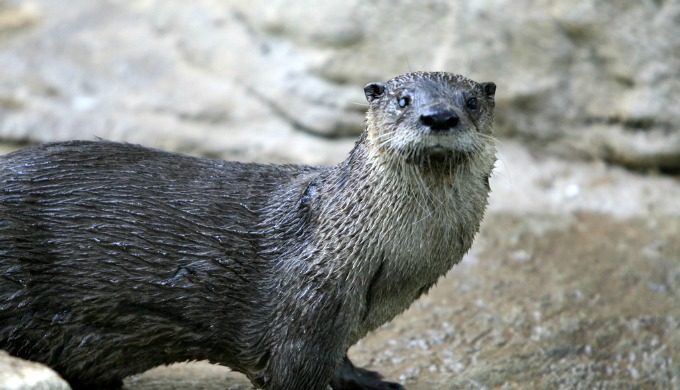River otters are native to Texas and spend their days near rivers and bayous. They’re primarily seen in coastal areas of the state and in East Texas, but in the past decade, there have been more and more sightings of these creatures in Central Texas. Once heavily trapped for their pelts, river otter populations are now believed to be expanding in Texas.
Nature
River Otters: These Elusive (and Cute) Creatures Could Be on the Move in Texas
Expert Swimmers

Photo: Flickr/Josh More
Otters are superb swimmers and divers and can remain underwater for several minutes. Although they prefer living near the water, they can also travel over long distances on land from one body of water to another. Their short legs and long, slender physique make their movements on land seem awkward, but they are graceful and nimble in the water.
River otters seem to be very playful animals. They especially enjoy making slides on a steep, clay bank and then sliding down them into the water on their bellies, face first with their front legs folded back.
Shy Creatures Who Are Rarely Seen

Photo: Flickr/Amy the Nurse
Otters wander a great deal through their habitats. Because of this, they are scarce in most localities. They are usually shy, inconspicuous creatures that are rarely seen even though they are active throughout the year.
According to Texas Parks and Wildlife, although the river otter is currently found in the eastern half of the state, it was probably once distributed throughout the Panhandle, north-central, and southern Texas. River otters prefer to live near bodies of water such as lakes, large rivers, and streams. Along the Texas Gulf Coast region, otters also live in marshes, bayous, and brackish inlets.
Sightings Increasing in Unexpected Places

Photo: Flickr/dbarronoss
Sightings of the elusive Texas river otter have increased, some in unexpected places, according to Texas Parks and Wildlife Department Biologist Gary Calkins. otters have been spotted much farther west than expected, and even as far north as Wichita Falls.
“There were sightings in Gonzales, that was kind of a surprise,” said Calkins, who leads TPWD’s tri-annual effort to survey rivers and monitor otter population trends. “But the real westerly sightings, those stick out in my mind.”



